The Partisans in the Forest
Stop Cop City, movement building, and the history of post-uprising fragmentation.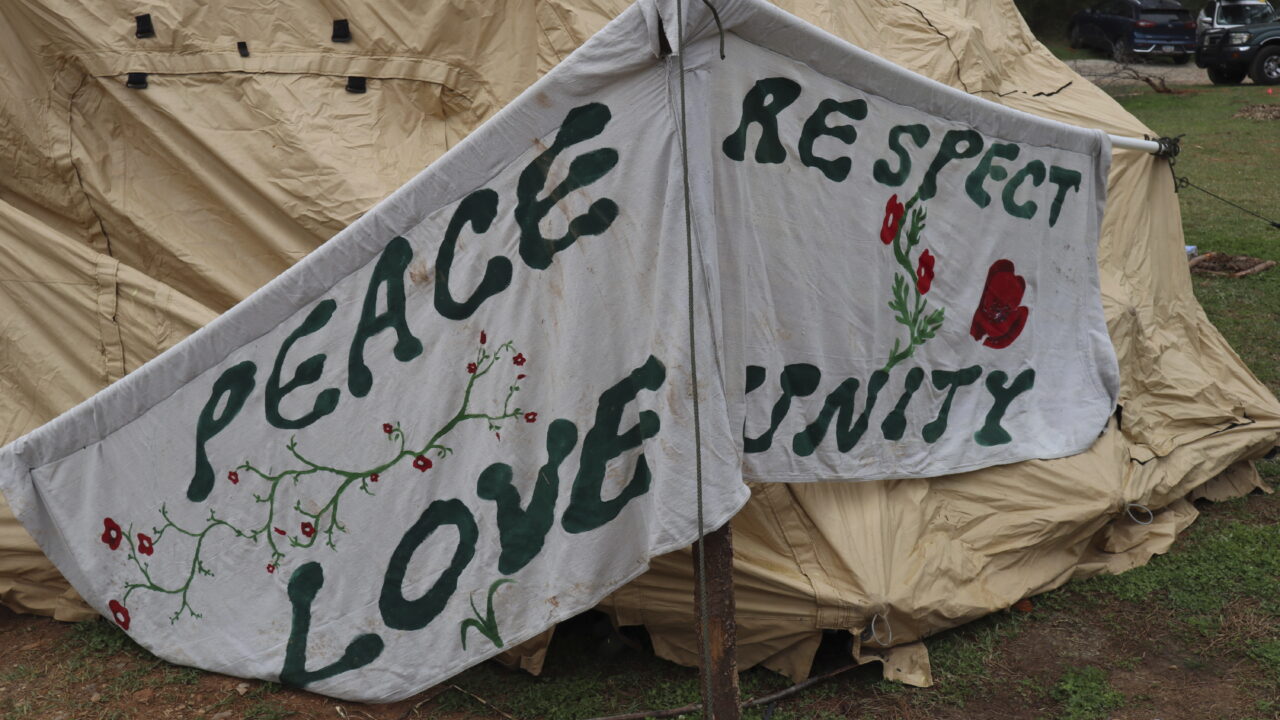 A tent is set up at the entrance to the South River Forest in DeKalb County, Ga., near the site of a planned police training center on March 9, 2023. (AP Photo/R.J. Rico)
A tent is set up at the entrance to the South River Forest in DeKalb County, Ga., near the site of a planned police training center on March 9, 2023. (AP Photo/R.J. Rico)
The relationship between spontaneous mass protest and durable political change is hard to predict. Throughout history, but especially since the ’90s, mass political participation has been the exception, not the rule. When uprisings like the George Floyd Rebellion happen, they tend to be brief and have a recognizable life cycle. Popular movements explode and then die down; what they leave behind are individuals and groups intent on keeping the flame alive.
Restoration periods follow: long moments of stabilization and reaction. Generally these periods are isolating for the individuals and groups on the left—call them “partisans”—who remain attached to popularly fading struggles.1 But post-uprising fragmentation doesn’t only shape the left. Other coalitions negotiate isolation and fragmentation in the wake of movements: the repressive sectors of the state; plus portions of the radical right that situate themselves in opposition to these sectors, and to the revolting masses. All three types of partisan—insurgent left, insurgent right, and repressive state—typically spend the restoration period fighting amongst themselves. The conflicts they endure and the alliances they form will determine the terms on which the next mass struggle will be fought.
I first encountered this cycle when I was studying “Global 1968” as it played out in the US. My hunch was that the smaller, scattered, isolated organizing efforts that outlived the mass movement had been unfairly neglected—and that they held some key to understanding the left my generation inherited. I spoke with union organizers who had spent decades in small communist party–building efforts, former members of armed clandestine groups like the Weather Underground, and veterans of small anarchist presses. All of them had joined the movement at its peak and struggled for direction in the lean years of Carter and Reagan. None of them achieved the revolution they had hoped for. All of them, nonetheless, decisively shaped the political terrain on which we now stand, in ways big and small.
Popular movements explode and then die down; what they leave behind are individuals and groups intent on keeping the flame alive.
The aggregate effect of their efforts was impressive. Even at their most fragmented, they formed an ecosystem that carried forward the spirit of ’68, continually refashioning insights and priorities born in the earlier mass movement (Third Worldism and Black Liberation; a return to the working class; the politicization of everyday life) into strategies appropriate to a new era and a changed landscape (subtler military intervention abroad and formal civil rights at home; recession and deindustrialization; atomized individualism and commodified counterculture). But ideologies, emphases, and tactical repertoires diverged further with time. The militants tended to get killed or locked up, while the mass organizers mellowed, sold out, or otherwise found themselves co-opted. Here were two paths: left deviation and right deviation, to use the old language. Without disappearing entirely, the post-’68 constellation had largely vanished by the turn of the century. Meanwhile the Neo-Nazis and the G-Men were learning and evolving, too.
In the 2010s, in the wake of Ferguson, Occupy, and the 2016 Bernie campaign, a new ecosystem began to grow. This was the one I joined, as did many others in my age cohort. The apotheosis of this movement arrived in 2020, when the largest protest wave in US history both consummated and cast doubt on the renascent left of the preceding decade. The hangover, now on its fourth year, has been brutal. Everything has changed, and no one knows what to do. We’ve sat through friends’ sentencing hearings and formed new study groups and have continued to chip away at union campaigns or mutual aid circles or whatever else we can help with. Mike Davis spoke for many when he voiced his bitter disappointment at the US left’s failure to learn and grow from the experience. But this lack of learning has been overstated: as in the late ’60s, the more enduring organizational impacts of the uprising are scattered, isolated, difficult to assess as a whole. To borrow the language of a small but important post-’60s underground press in Chicago, they’re “seeds beneath the snow.” Many of these seeds still haven’t even begun to sprout.
* * *
In Atlanta, spring came early. The first thing to emphasize about the movement to Stop Cop City is that it is a movement by and for the committed left, by and for “leftists.”2 This fact is as obvious to our supporters as it is to our enemies. The City of Atlanta has certainly deployed it as a key point of attack, rhetorically and legally: the hoary trope of the “outside agitator” has been trotted back out once again, either with deliberate disregard for its Civil Rights era resonance or with the specific intent to draw on the wells of Neo-Confederate resentment it provokes. But the accusation also happens to be true. A key part of the initial impetus for the movement did indeed come from “outside agitators”—already-committed left activists and organizers from a variety of groups and social networks, most local, some not. Before the embers of 2020 had even cooled they set out to build a movement bigger than the sum of its parts, one that would keep the flame alive. They succeeded. Obscuring these origins may have been tactically necessary while the movement was in its infancy, but now that it’s all grown up, some greater candor is in order. Rather than a point of weakness, the debt to leftists—to “outside agitators”—is something to boast about.
Plans for Cop City were originally conceived and implemented through a series of backroom deals and negotiations internal to the patronage networks of the so-called Atlanta Way, a longstanding coalition of multiracial business elites and political leaders that has governed the city for decades. In two short years, however, the movement has succeeded in dragging this routinized corruption into the light and has revealed the central political contradictions of the city of Atlanta—as well as the state as a whole. In doing so, it has also cut to the heart of the strategic questions the extra-parliamentary left faces in the post–George Floyd era.
One of the central achievements of the Atlanta Way was the relative absence of unrest in the second half of the 1960s, even as uprisings rocked cities from Los Angeles to Detroit—especially after the assassination of Martin Luther King, Jr. These uprisings terrified not only conservatives, but also white liberals, because they indicated unequivocally that formal civil rights were not enough, that nothing short of the total political and economic destruction of white supremacy would be sufficient. The organization of the Atlanta Way seemed to offer a beacon of stability in unstable times, a dynamic that reigned until the 2020 uprising, which was particularly sustained and intense in Atlanta. While the Cop City project had been proposed years earlier, the events of 2020 spurred the Atlanta elite to push harder for its construction. Cop City, it was hoped, would both ameliorate the crisis of police morale and leave Atlanta’s police better prepared to contain any future mass uprising. Perhaps more importantly, it would reassure potential investors of the city’s continued viability as the gentrifying yuppie playground it’s been rapidly becoming. Set all this all in one of the most surveilled, highest-inequality, Blackest cities in the US, in the famously “purple” state of Georgia, and you have a perfect proving ground for both protest and repression after George Floyd.
The organization of the Atlanta Way seemed to offer a beacon of stability in unstable times, a dynamic that reigned until the 2020 uprising, which was particularly sustained and intense in Atlanta.
The movement in Atlanta is not exceptional for either its militancy or its broad-based community organizing. It is exceptional for fusing these elements in the midst of a relatively depoliticized period of “restoration,” and for doing so in a durable way. Despite serious internal tensions and the best efforts of law enforcement and the City to exploit them, the movement has stuck together. Those focused on electoral efforts don’t denounce the saboteurs, and vice versa. This unusual level of cohesion pertains across ostensible demographic and ideological barriers. As with the rest of the country, the uprising here was driven primarily by two demographics: young college-educated professionals and young working-class Black people. The organizations and individuals that catalyzed the Stop Cop City movement either draw from these same demographics or aim to represent them. In this respect, the movement is a direct continuation of 2020.
Despite the whiteness of the most visible chunks of the movement, organizations like Community Movement Builders have invested tremendous energy and made major inroads among non-activist Black Atlantans (partially through judicious alliances with the city’s overgrown progressive NGO sector). And the much-publicized anarchists and environmentalists are joined by organizations spanning the spectrum from NPR left-liberalism to Orthodox Marxism-Leninism and Revolutionary Black Nationalism. Few of these groups are new. In fact, many were formed or have their roots in precisely the post-’60s moment. To take just two examples: Community Movement Builders grew out of the New Afrikan Independence Movement of the 1970s and 1980s, while many of Atlanta’s anarchists base themselves on the Autonomist movements of Germany and Italy in the same period, or on Tiqqunism, a ’90s successor ideology to the Situationism of Guy Debord. The far-flung geographical ties go deeper than ideology. Partisans across the country and even abroad—from France to Chiapas—have seized on the movement as a focal point and made pilgrimages to support or merely pay their respects. Movement veterans of the ’60s left have done the same, some of them even becoming actively involved. Spend enough time around or reading about the movement and these features become hard to ignore.
No single group or milieu’s participation is particularly surprising. All of them working together, however? That’s unusual, perhaps the only situation of its kind in the US at present (that is, until the recent resurgence of Palestinian solidarity, about which more below). Is this a “movement of movements,” in the language of the ’90s? Is it a process of “composition,” uniting disparate groups without totalizing them, as Hugh Farrell and other organization-skeptical ultra-leftists have argued? Is it—with a bit more grandiosity—the prelude to a classical vanguard party, or to the minimal Leninism proposed by Vincent Bevins as a solution to the missed opportunities of protest in the 2010s? Maybe it vindicates Salar Mohandesi’s call for a “party as articulator,” a political party of a new type “which unites disparate social forces, links struggles over time, and facilitates the collective project of building socialism beyond the state”? Pick your (anti-)organizational poison, the basic point here is the same. Atlanta has been one of the few places in the post-2020 US with a left ecosystem vibrant enough to even pose these questions in practice, and we have the movement to thank for that.
* * *
So what is the movement “really” about, beyond the trees and the cops? Why this convergence? What is it that all these far-flung groups and individuals intuitively grasp about the importance of this particular struggle? What significance has been forced here? I don’t want Cop City to be built, and neither do my friends who live near its proposed site. I didn’t want them to cut down the forest either, and the progress they’ve made on that front is a tragedy. As worthy as both these causes are in their own right, they are not, in themselves, the reasons I care so much about the movement, nor are they the reasons why so many others do, nor are they why you should. You should care because the movement is both 2020 in miniature and a direct bridge to the mass struggles to come.
On top of its organic local base, the movement has ties and supporters across the country and across the world. Right now, that support has been spread largely through the milieus of those drawn to the flashier moments of direct confrontation. Mirroring this, the shrillest outrage and calls for crackdown are rooted in the fascoid Trumpist wing of the Republican Party and its further-right orbiters. The police and broader repressive state machinery, meanwhile, have rolled out tools of repression old and new, from age-old methods of surveillance, intimidation, physical violence, and murder to a test run of Georgia’s draconian domestic terrorism statute and the attempted prosecution of members of the Atlanta Solidarity Fund for alleged financial crimes. The further right lurks in the background, taking pictures and writing articles that DHS cribs from when they publish their extremism advisories. Somewhere in an FBI office, someone is compiling files on the various support groups the movement has inspired in cities across the country and assigning threat designations to bookstores. Insurgent left, insurgent right, repressive state: it is clear to all three types of partisan that Atlanta is a test case and a site of innovation, that the contours of any future uprisings are being shaped here.
When we evaluate Stop Cop City, then, three questions are key, and so far, the answers are promising:
- What kind of partisan does it create, and which skill sets does it develop?
- How does it shape the terrain on which future struggles will be fought?
- How well does it function for the left as an “articulator” or rallying point?
These questions take on particular weight during periods of restoration. The relatively scattered and isolated partisans of the left have to focus their activity on continuity; on stitching the past to the future; on weaving together disparate contemporary struggles; on sabotaging the efforts of the insurgent right and repressive state to prepare for the next mass movement; and on developing personnel to more effectively intervene when it comes.
As a forest defender friend put it, “the skills we emphasize and practice in this movement should be the skills we want to take with us.” This is a very young movement, but one that’s attracted the involvement of seasoned oldheads with wisdom to spare. Thanks to that wisdom, and to the movement’s unusual vibrancy and much-vaunted “diversity of tactics,” the learning opportunities are unique and extremely valuable. Just as Atlanta has attracted veterans of Line 3, Standing Rock, and older struggles, you can be certain that alumni of this movement will be on the frontlines of whatever comes next. On the second: echoing state and federal law enforcement, the White House itself has indicated the importance of Cop City as a model for the rest of the country and—as another friend, a criminal defense attorney, observed about the unprecedented, draconian legal repression the movement has faced—“the state would love a new set of prosecutorial tools to go along with their fancy new training facility.” Fighting the development of these tools, inside and outside the courtroom, will have a direct impact on protest and repression in the years to come. But still it’s the last point, about the movement as an “articulator,” that might be the most important.
Aside from all organizational specifics, it’s precisely this function that makes the left a distinct quasi-subcultural social group and not merely a label for broad political trends. As a certain 19th-century German philosopher once put it, speaking about a very different left,
The Communists are distinguished from the other working-class parties by this only: 1. In the national struggles of the proletarians of the different countries, they point out and bring to the front the common interests of the entire proletariat, independently of all nationality. 2. In the various stages of development which the struggle of the working class against the bourgeoisie has to pass through, they always and everywhere represent the interests of the movement as a whole.3
Speaking of a time a bit closer to our own, a socialist organizer in Italy’s late-1960s Hot Autumn described how he and his comrades
saw our main contribution to the movement not as providing a substitute for the unions, or for the parties, but as students and intellectuals who were involved in helping the workers’ vanguards to develop their own autonomy—autonomia operaia—through an understanding of the broader processes, both national and global, in which their struggles were taking place.4
You have to unfocus your eyes a bit, maybe swap out a few of the terms, to shake off the cobwebs and translate the past to present circumstances, but the same principle holds.
Greater perspective and continuity, as achieved through organization, are the defining differences between the perennial, sporadic revolts of the oppressed in pre-capitalism and the global left as it has developed over the past 220 years or so. Compare the Peasants’ War in Germany (a noble but doomed dead end even at its grandest; isolated from other struggles in both time and place) with the Bolsheviks (one result of the decades of international debate and experiment that followed the crushing of the 1848 revolts; in dialogue with German Social Democracy abroad and Narodnik predecessors at home). What made the difference? One key was continuity—learning from previous generations’ fights and consciously laying the groundwork for those still to come (the cycles-of-struggle process glossed above). Another was perspective—connecting the local fight to countless others elsewhere and to the global situation, and then acting with those in mind. Both of these require deliberate effort—they don’t happen automatically. Organization in its broadest sense is the means by which the perspective and continuity that characterizes the left is established in practice. Organizers, activists, partisans, cadre, anarchists, communists, revolutionary nationalists—that is to say, self-consciously committed radicals of various types—have been a key product and driver of this process.
* * *
The movement to Stop Cop City, as a movement by and for partisans of the left in a period of restoration, is one of the forms this process takes. You can see it in the coalitions the movement has assembled, nudging disparate groups together until they snowball and gain momentum of their own, or in how it chooses who to nudge and how by drawing lessons from 2020, or in its national and international linkages with other movements. This, I think, is the source of the passion many feel for the movement above and beyond the inherent worthiness of its immediate goals, or the sense that it represents a convergence of every conceivable issue, that it is the frontline of every struggle. This may also be why the far right inside and outside the repressive wings of the state has taken such an interest in it.
In closing, a few suggestions. First and foremost, everyone should be paying close attention to the movement, in Atlanta and across the country. Ideally, they should find some way to get involved or talk directly to those that are. Second, we should keep writing about the topic, and especially producing writing focused on documenting how things were done: what worked, what didn’t, why, and so on. This writing should be as concrete and detailed as is practicable. Where concerns about repression and the inherent limits of the movement’s decentralization make this difficult, we should find other ways of ensuring that the experience is passed on with as little varnish as possible. While necessary, popular education and other material aimed at a mass audience isn’t enough. One way or another, we need the inside baseball, not just PR. Third, action and reflection should both be focused on leaving the left—in Atlanta, in the US, across the world—in a better position than it was in before the movement started. Finally, the movement should be contextualized as concretely as possible within the cycles and sequences of the historical left and the constellation of movements happening at the same time. This doesn’t just mean rhetorically, but rather in terms of forging direct personal and organizational links wherever possible. All of these things are already happening, probably even more than I’m aware of. My goal is only to clarify some implicit orienting principles and strengths to focus on, both for those of us within the movement and those watching from afar.
You should care because the movement is both 2020 in miniature and a direct bridge to the mass struggles to come.
As Israel escalates its genocide in Gaza, the movement has pivoted seamlessly into an increasing emphasis on Palestinian solidarity, tracing links between the APD and the IDF through the Georgia International Law Enforcement Exchange (GILEE) program and between the “landback” demand shared by Palestinians and Muskogee activists in the US. The massive wave of street demonstrations, civil disobedience, labor action, consumer boycott, and sabotage that have swept the country in the past three months has been extremely promising, the largest and broadest anti-imperialist mobilization this country has seen in decades. While the most visible aspects of this mobilization have happened in the streets and in the civil war wracking newsrooms and university campuses, it’s also fundamentally reshaped the electoral landscape and begun to fracture ruling class political blocs at the highest levels. Gaza’s martyrdom, an issue long relegated beyond the scope of real political contestation, is now a decisive issue in the 2024 presidential election. The disjoint between left-liberal elected officials and their constituencies has become glaring, prompting urgent new rounds of strategic debate over street militancy, electoral pragmatism, and the limits of the Democratic Party. These are the exact dynamics and questions that have, on a much smaller scale, animated the movement in Atlanta for the past several years, so it’s no wonder that the pivot to Palestine has been so natural. This is a testament to the forward-looking quality of the movement I’ve attempted to sketch above, a perfect illustration of why stepping-stone struggles are so important and why Atlanta’s has been exemplary.
Combine the pivot to Palestine with the recent RICO indictments, two disappointing weeks of action, a failure to re-occupy the forest, and the beginning of cement being poured (even as trucks go up in flames overnight) and it’s clear the movement is at a turning point. One way or another, it will have to evolve, though I don’t pretend to know how. In all likelihood, repression and resistance to it will come to occupy an increasingly central place. This offers another organic point of convergence with the Palestinian solidarity movement, one more front in a new generation of partisans facing the rapidly mutating machinery of “counterterrorist” political prosecution. The legal system is slow and brutal. That can be the death of a movements or it can become the very thing that keeps them alive. The political situation at home and abroad is turbulent and shows every sign of becoming more so. This can fracture and fragment movements or spur them to evolve in unexpected, productive new directions. Within the limits of inherited circumstance, it’s up to us to decide. Atlanta’s partisans have given us invaluable material for doing so.
- Both the “cycles” and “partisans” discussed here overlap—conceptually and in terminology—with several ongoing debates among social movement theorists across the political spectrum. Phil Neel’s concept of “partisan” in Hinterlands, to take one example, has been an extremely helpful jumping-off point, but the term’s meaning here is distinct. I am also, of course, profoundly indebted to countless discussions with friends and comrades in Atlanta over the past several months. ↩︎
- For more on the movement and its work over the past two years, see “Not One Tree,” by Grace Glass with Sasha Tycko, in the current issue of n+1: https://www.nplusonemag.com/issue-46/essays/not-one-tree/. Familiarity with the basic facts and vibes of the situation will be assumed from here on out. ↩︎
- Communist Manifesto, Chapter 2: Proletarians and Communists. ↩︎
- Arrighi, Winding Paths of Capital. ↩︎
Independent journalism is under threat and overshadowed by heavily funded mainstream media.
You can help level the playing field. Become a member.
Your tax-deductible contribution keeps us digging beneath the headlines to give you thought-provoking, investigative reporting and analysis that unearths what's really happening- without compromise.
Give today to support our courageous, independent journalists.
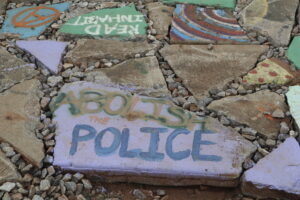
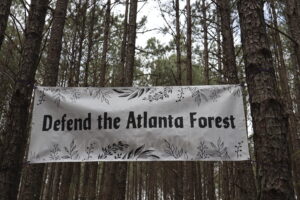
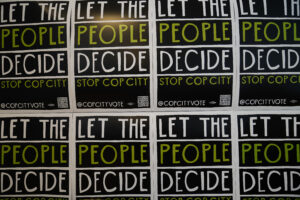

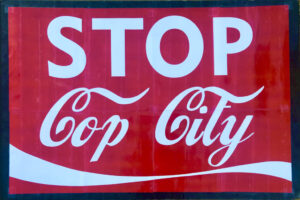
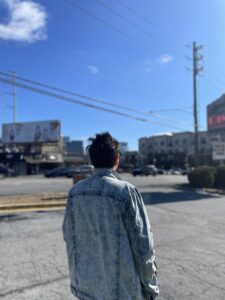


You need to be a supporter to comment.
There are currently no responses to this article.
Be the first to respond.